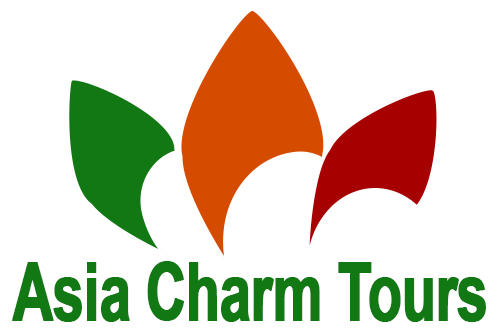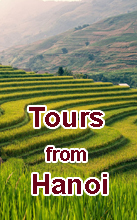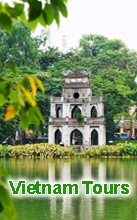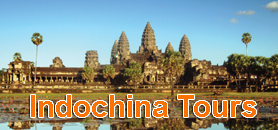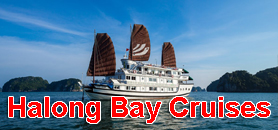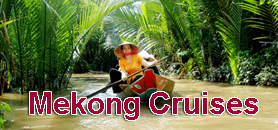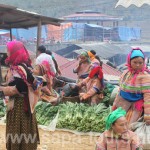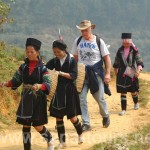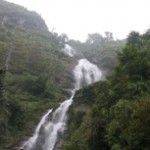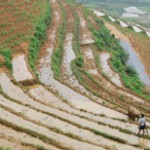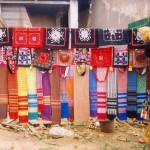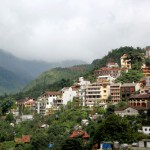New opportunities for Mau Son tourism
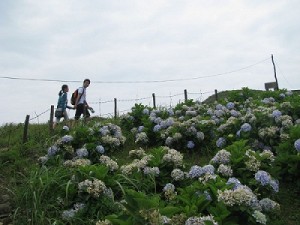 The Mau Son tourist area (Lang Son Province) has engaged the interests of visitors in recent years due to its inherent attractiveness, offering a potential destination for domestic and foreign investors.
The Mau Son tourist area (Lang Son Province) has engaged the interests of visitors in recent years due to its inherent attractiveness, offering a potential destination for domestic and foreign investors.
In Vietnam’s overall tourism development strategy and plan by 2020 with a vision to 2030, Mau Son is one of 46 destinations throughout the country having unique tourism potential and conditions to become a national tourist area.
According to documents, in 1918, Khai Dinh King visited Lang Son Province and opened road to Mau Son Mountain. In 1935, Veterinarian O. Pilot built the first villa in Mau Son Mountain. The French considered this area as an ideal resort and numerous villas, gardens and playgrounds were built. Compared to other resorts in Da Lat, Ba Na, Sa Pa and Tam Dao, Mau Son liked Sleeping Beauty.
This panoramic area attracted the French to Mau Son for relaxation due to the nature’s preference for the climate and landscapes. Mau Son is 1,000, height above sea level with more than 80 large and small mountains and primeval forests. Mau Son has temperate climate with an average temperature of 15.5 degrees Celsius. Winter starts from November to March with an average temperature of 7.2-13.2 degrees Celsius and summer starts from April to October with an average temperature of 16-21 degrees Celsius.
Mau Son welcomes 40,000-50,000 visitors every year. In addition to an ideal resort, Mau Son has unique tourism potential and conditions to become a national tourist area.
Future
In addition to advantages in terms of climate and landscapes, the most important thing is to develop types of tourism in this area.
According to scientists, Mau Son Tourism had enough conditions to develop eight different types of tourism, including sightseeing, hospitality, spiritual culture, ecotourism, adventure sports, conference and weekend travel.
It is better to arrange types of tourism in order. Firstly, it is hospitality. Numerous villas, gardens and playgrounds built by the French for nearly a century are the biggest advantage. In addition, traditional remedies of Dao and Tay ethnic minorities can be seen as unique tourism products.
Spiritual tourism ranks second. Mau Son has become more attractive due to exciting discoveries in terms of Mau Mountain and Temple. The old Mau Temple remains two large tombs made by original stones with clever carving. According to Lang Son Department of Culture, Sports and Tourism, an investor surveyed and invested VND500 billion in this type of tourism.
Sightseeing and ecotourism are two types of tourism that will strongly develop in Mau Son. Values in terms of natural landscapes, architecture, traditional activities, the richness and diversity of primeval forests in Mau Son are attractive tourism products needed to be exploited. Mau Son is 30km from Lang Son City and 100-170km from Hanoi and large urban areas in the Red River Delta region. It can be seen as a significant advantage for the development of two types of tourism in Mau Son.
Practical experiences showed that when a type of tourism played an important role, other types of tourism would have more favorable conditions to develop.
Implementing tourism promotion activities
Unique values in Mau Son have not been exploited yet. Therefore, Mau Son will study advantages and disadvantages will be overcome and learnt from experiences.
For example, Ninh Binh Tourism had recorded a high growth in recent years with a revenue growth of 60.56 percent per year. One of the most important reasons for its impressive result is an investment in tourism with total investment capital of nearly VND20 trillion. Ninh Binh currently focuses on constructing and developing the Tam Coc-Bich Dong tourist area, Van Long ecological tourist area and Kenh Ga-Van Trinh tourist area. In particular, Trang An Natural Reserve is in the process of finalizing documents in order to submit to the United Nations Educational, Scientific and Cultural Organization (UNESCO) to be recognized as the world’s cultural heritage.
Another example is Lao Cai Province. The province successfully organized many major events in 2012. In particular, three intangible cultural heritages, including Gau Tao Festival, Dao and Tay ceremonies were recognized as national intangible cultural heritage. In addition, Lao Cai Province welcomed 940,000 visitors and reached total tourism revenues of over VND1.8 trillion in 2012. Sa Pa was introduced as one of five splendid destinations for visitors by the Lonely Planet Traveller (the UK).
Proper investment and implementing tourism promotion activities are indispensable lessons for the development of Mau Son Tourism.
Source: vietnamtourism.gov.vn
Also see:
- Sapa Việt Nam’s mountain range in top place to travel in 2019
- The Southern Fruit Festival 2017 will last for 3 months
- Cheo plays to grace Ha Noi stage every Saturday
- Vietnam among top 10 budget honeymoons: Lonely Planet
- Celebrate Lunar New Year in Sapa
- Ideal Places For Travelling By Motorbike In Vietnam
- Da Lat And Sa Pa Among Best New Destinations In Asia
- Homestay in Ta Van Village, Sapa
- Thang co’ – A traditional dish of Mong ethnic group
- Vietnam is a safe country for tourists afraid of terrorism
- Vietnam’s three destinations among top 50 most beautiful places in Asia
- Ha Giang to hold 2nd annual Mong Ethnic Cultural Festival


